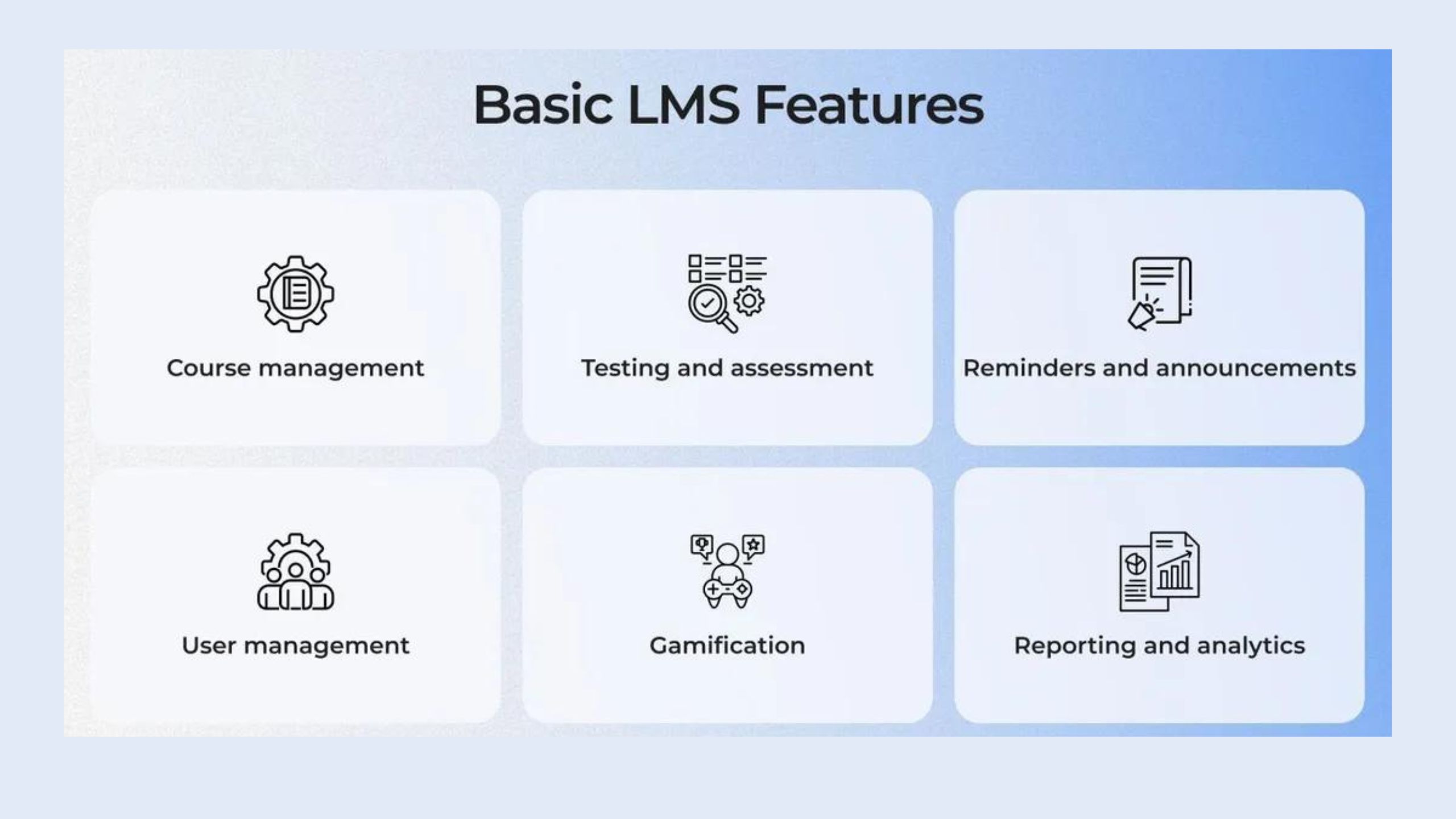In an era where digital transformation is not just a buzzword but a necessity, the surge in demand for e-learning platforms has been unprecedented. Businesses, educational institutions, and even individual educators are diving into the realm of online school and virtual learning, leveraging technology to break down geographical and temporal barriers in education. This shift is not just about adopting new technologies like augmented reality (AR) and virtual reality (VR); it’s also about understanding the intricacies of creating a platform that can adequately serve the needs of learners and trainers alike. The construction of an e-learning platform requires thorough market research, an effective business analysis, and an intricate understanding of the learning management system (LMS) to deliver content that is both engaging and educational.
This article will guide readers through the foundational steps of building an e-learning platform, discussing essential aspects such as defining the business model, outlining the core features necessary for an effective online learning experience, and exploring the technology stack suitable for mobile app development and web-based platforms. Additionally, it will address the significance of user interface and experience design, the strategies for content creation and management, and the effective marketing and user engagement techniques to ensure platform adoption and success. Cost estimation factors will be meticulously examined, offering insights into planning budgets wisely, whether it involves in-house development or outsourcing. Through case studies and real-life success stories, this article aims to illuminate the path for entrepreneurs and educators looking to create a minimum viable product (MVP) or a fully fledged e-learning platform, ensuring they are well-equipped with the knowledge to navigate the complexities of this rapidly evolving field.
Defining Your e-Learning Business Model
Subscription-Based Model: Subscription learning offers an accessible model where e-learning courses or modules are broken down into smaller, consumable “nuggets” of information, available through a yearly or monthly subscription fee. This model allows learners to access content from any location and on any device, promoting flexibility and continuous learning. It is particularly effective as it makes learning a habit and holds subscribers accountable for completing their courses. Additionally, subscription models generate recurring revenue, providing financial stability and predictability for the business.
Freemium and Paid Certificates: While free courses provide basic access to learning materials, paid courses often include additional benefits such as well-structured curriculums, comprehensive learning, and support services like resume reviews and interview preparation. Paid courses are frequently tied to accredited educational institutions, enhancing their credibility and the value of their certificates in the job market. This model can significantly improve job prospects compared to free courses, which may lack the depth and recognition needed in many professional fields.
Corporate Collaboration: Building a partner ecosystem can be a strategic approach for e-learning platforms, providing access to new markets and technologies which can accelerate growth and improve offerings. By collaborating with companies that offer complementary services, e-learning platforms can create a more comprehensive and valuable customer experience. This collaboration not only helps in sharing the costs associated with marketing and development but also in enhancing the platform’s reach and profitability.
Content Licensing: Content licensing allows e-learning platforms to use copyrighted material under specific conditions, which can significantly enhance the quality and depth of courses offered. By entering into licensing agreements, platforms can access a vast array of resources, enabling them to offer a more diverse and comprehensive curriculum. This approach also helps in saving time and costs associated with content creation, allowing platforms to focus more on enhancing user engagement and learning outcomes.
Core Features of an e-Learning Website

User Registration and Profiles
The account registration and profile creation process on an e-learning platform must be straightforward and quick, allowing users to edit personal details such as name, phone number, or email ID, and make various adjustments to their content. This ease of use in profile management encourages users to engage more actively and maintain their personal and educational information up to date.
Course Creation Tools
E-learning platforms should offer advanced features that enable tutors to create and manage their courses effectively. These tools include options for integrating multimedia content such as videos, audio, and interactive simulations, which are crucial for delivering engaging and successful content. Additionally, it is essential for these platforms to provide a robust set of tools that help in the assessment and analysis of student performance, thereby enhancing the educational experience.
Interactive Learning Modules
Interactive learning modules are vital for engaging students and providing a dynamic learning experience. These modules should include a variety of interactive activities, visual aids, and multimedia elements that cater to different learning styles and help learners grasp information more effectively. By actively involving learners and promoting hands-on activities, interactive modules enhance knowledge retention and encourage the application of learned skills in real-world settings.
Assessment and Tracking Tools
Effective e-learning platforms must incorporate comprehensive assessment and tracking tools that allow educators to measure learning outcomes and track student progress. These tools should include a variety of testing options, such as quizzes, simulations, and real-time feedback mechanisms, to ensure a thorough evaluation of student performance. The ability to track student progress and provide timely feedback is crucial for the adaptation of teaching strategies and the improvement of course content.
Payment and Subscription Management
Payment and subscription management is a critical feature for e-learning platforms, especially those operating on a subscription-based model. The platform should support multiple payment gateways and provide flexible payment options to accommodate the diverse financial needs of students. Additionally, integrating a robust subscription management system can help streamline billing processes and improve the overall management of user subscriptions, enhancing both user experience and administrative efficiency.
Technological Stack for Developing an e-Learning Platform
Frontend Technologies
The choice of frontend technologies is crucial for creating an engaging and responsive e-learning platform. HTML, CSS, and JavaScript form the foundational trio for any web development, ensuring that the structure, style, and dynamic features of the platform are user-friendly and effective . Advanced JavaScript frameworks like React, Angular, and Vue enhance the interactivity and modularity of the platform. These frameworks support the development of single-page applications and provide a rich user interface, which is essential for an immersive learning experience.
Backend Technologies
For backend development, a variety of programming languages and frameworks can be utilized to ensure robust and scalable server-side operations. Python and Node.js are popular choices due to their performance and flexibility. Python, often used with frameworks like Django, is appreciated for its readability and efficiency, while Node.js supports asynchronous programming, crucial for handling multiple user requests simultaneously. Additionally, ASP.NET can be a suitable option for its ease of use and integration with other Microsoft products, making it a strong candidate for enterprise-level applications.
Cloud Storage and Hosting Solutions
Cloud storage solutions are integral to modern e-learning platforms, providing scalable and secure data storage options. Services like Google Cloud Storage and Firebase offer robust solutions for hosting videos, documents, and other course materials, ensuring high availability and global reach. These platforms support real-time data syncing and automatic backups, which are essential for maintaining the integrity and availability of educational content.
Security Considerations
Security is paramount in the development of e-learning platforms to protect sensitive student information and intellectual property. Implementing comprehensive security measures such as data encryption, secure authentication processes (including multi-factor authentication), and regular security audits can safeguard against potential cyber threats. Additionally, adhering to data protection regulations like GDPR and using digital rights management (DRM) technologies ensures that the platform complies with legal standards and protects content from unauthorized access.
User Interface and Experience Design
UI/UX Principles
User experience (UX) design is pivotal in crafting engaging and effective e-learning platforms. It encompasses visual design, interaction design, and information architecture, ensuring a positive learning experience. Good UX design is characterized by user-centered approaches, consistency, simplicity, accessibility, and feedback mechanisms. These elements help in creating intuitive, engaging, and accessible e-learning platforms.
Visual design, the first pillar of UX, focuses on creating aesthetically pleasing interfaces that engage learners. It uses visual hierarchy, consistent fonts, colors, and imagery to enhance learner focus and engagement . Interaction design, the second pillar, ensures that interfaces are intuitive and easy to use, incorporating elements like buttons and menus that are clear and interactable. Information architecture, the third pillar, organizes information in a clear, logical manner, making content easy to navigate and understand .
Accessibility and Mobile Responsiveness
Accessibility in e-learning is crucial for providing equal learning opportunities to all users, including those with disabilities. It involves creating content that is compatible with assistive technologies and designing courses that are accessible to users with various levels of technical ability. Mobile responsiveness enhances e-learning by ensuring content adjusts to different screen sizes and orientations, promoting a uniform learning experience across devices. This includes testing e-learning content across multiple devices to ensure compatibility and addressing any layout or functionality issues that may arise .
Personalization Features
Personalization in e-learning tailors the learning experience to individual needs, preferences, and goals. This can be achieved through adaptive learning, customized learning paths, and personalized feedback . Features like role selectors, adaptive pre-tests, and branching scenarios help in delivering a more personalized and effective learning experience. These features ensure that learners engage with content that is most relevant to their needs, enhancing learning outcomes and reducing completion times .
By integrating these principles and features, e-learning platforms can create more engaging, effective, and inclusive learning experiences. This approach not only improves user satisfaction and learning outcomes but also addresses the diverse needs and preferences of a global learner base.
Content Creation and Management
Types of Educational Content
Educational content in e-learning platforms can vary widely, depending on the subject and the learners’ needs. Video content, for instance, is highly engaging and can effectively demonstrate concepts or processes 57. Interactive elements such as quizzes and assessments are crucial as they help in evaluating and reinforcing learners’ understanding . For more immersive experiences, virtual reality (VR) and augmented reality (AR) provide real-world simulations, which are particularly beneficial in fields requiring high-risk training scenarios . Additionally, podcasts offer a flexible audio-based learning option that is accessible on the go, making them suitable for topics like leadership and communication.
Content Authoring Tools
Content authoring tools are essential for creating engaging and effective e-learning courses. These tools allow instructional designers and educators to integrate various multimedia elements such as videos, interactive simulations, and quizzes . Learning Management Systems (LMSs) automate the administration and delivery of courses, while Learning Content Management Systems (LCMSs) provide a comprehensive solution for creating, hosting, and managing content. For those aiming for a tailored learning experience, authoring tools offer features like gamification, personalized learning paths, and the ability to adapt content to meet changing demands. When selecting an authoring tool, it’s important to consider user-friendliness, collaboration capabilities, and the ability to manage translations and localizations effectively.
Managing and Updating Course Material
Maintaining and updating e-learning content is crucial to ensure it remains relevant and effective. Regular updates are necessary to reflect the latest industry practices and technological advancements. It’s also important to gather feedback from users to continually improve the learning experience. Tools that support easy updating and content management can significantly enhance the efficiency of these processes. Additionally, organizing content in a logical manner, whether sequentially or non-sequentially, helps in managing the learning paths effectively. For platforms with a global reach, ensuring content is accessible and adaptable to various devices and screen sizes is critical for maintaining a broad and engaged user base.
Marketing and User Engagement Strategies
Social Media and Content Marketing
Social media plays a pivotal role in the digital marketing strategies of e-learning platforms, with 72% of people using social media multiple times a day, providing a significant opportunity to connect with potential learners where they spend a considerable amount of their time. To effectively utilize social media for e-learning, platforms should choose the right social platforms that align with their business goals and audience demographics. Engaging with prospects through timely and relevant content, and responding to their interactions, fosters a sense of community and keeps the audience engaged. Additionally, running targeted social media ads can significantly increase visibility and attract new learners who might not be aware of the educational services offered.
Implementing a robust social media marketing strategy involves understanding the audience’s preferences and behaviors, which can be challenging but crucial for crafting impactful messages and content. Platforms should also focus on creating diverse content types that cater to the varied tastes and preferences of their target audience, which can include educational videos, informative posts, and interactive content .
Engagement and Retention Techniques
Creating interactive content is essential for maintaining learner engagement and ensuring information retention. E-learning platforms can leverage multimedia elements such as videos, animations, and interactive assessments to cater to different learning styles, thus enhancing the overall learning experience and maximizing training ROI. Furthermore, incorporating collaborative learning and peer interaction through synchronous and asynchronous methods can significantly boost engagement and effectiveness, providing learners with a platform to share and gain knowledge from diverse perspectives .
To personalize the learning experience, e-learning platforms can use analytics to craft customized learning pathways and content, which align with individual learner’s goals, interests, and previous performance . This approach not only enhances learner engagement but also improves satisfaction and outcomes, making the learning process more relevant and effective.
Analytics and Feedback Loops
Learning analytics play a crucial role in enhancing the effectiveness of e-learning platforms by providing insights into learner behaviors, preferences, and performance. By analyzing data collected through interactions with the platform, educators can identify patterns and trends that help in personalizing the learning experience, thereby increasing engagement and effectiveness. For instance, analytics can reveal which content is most engaging or where learners tend to struggle, allowing for timely adjustments to the curriculum or teaching methods.
Furthermore, integrating feedback loops into the learning process enables continuous improvement and adaptation of strategies based on learner input and performance data. This dynamic approach ensures that the content remains relevant and engaging, thereby enhancing the overall learning experience and success rates. By maintaining transparency about data usage and involving learners in the feedback process, e-learning platforms can build trust and foster a more cooperative and productive learning environment.

Cost Estimation Factors
Development Stages and Costs
The initial setup of an e-learning platform involves significant investment in infrastructure and technology, including the acquisition of Learning Management Systems (LMS), hardware, and software licenses. The complexity of the desired features significantly influences the development costs. For instance, incorporating advanced functionalities like gamification, AI-driven recommendation systems, and interactive assessments can escalate the costs. The development of a basic online learning platform can start from $50,000, with more sophisticated platforms potentially exceeding $300,000.
Maintenance and Operational Expenses
After the platform is launched, ongoing maintenance is crucial to ensure functionality and relevance. This includes regular software updates, technical support, and content revisions. Additionally, user support services are essential to address customer queries and technical issues, which also contribute to operational costs. Regular updates, content refreshments, and feature enhancements are vital to maintain technological efficiency and user satisfaction, with annual maintenance costs varying depending on the platform’s complexity.
Scaling Your Platform
As the user base grows, the scalability of the e-learning platform becomes a critical factor. An e-learning solution must be capable of handling increased demands without compromising performance. This might require enhancements to the infrastructure and possibly significant investments in scalable cloud services or advanced hosting solutions. Costs associated with scaling can include upgrading the LMS to handle more users and content, as well as improving system architecture to ensure efficient load handling and minimal downtime. Scalability not only involves technical upgrades but also includes planning for increased administrative and support staff needs.
Success Stories and Case Studies
Examples of Successful e-Learning Platforms
One notable success story in the e-learning sector is the platform Coursera. Coursera has effectively partnered with top universities and organizations worldwide to offer a wide range of courses, from technology to humanities, thereby reaching millions of learners globally. Their model leverages high-quality content and accessibility, contributing to their substantial growth and popularity in the online education space.
Another successful example is Khan Academy, a non-profit educational platform that initially started with simple tutorial videos on YouTube. It has since expanded into a comprehensive learning platform offering courses for students of all ages. Khan Academy’s emphasis on free, accessible education has been pivotal in democratizing learning worldwide.
Udemy, as a platform, has also carved out a significant niche in the market by allowing experts to create and sell courses on a myriad of subjects. This model not only facilitates a diverse range of learning materials but also empowers instructors by enabling them to reach a global audience and earn income through their expertise.
Lessons Learned
The journey of these platforms offers valuable lessons for new entrants in the e-learning market. One key takeaway is the importance of strategic partnerships and collaborations. Platforms like Coursera have thrived by collaborating with prestigious educational institutions, which has not only bolstered their credibility but also enriched their course offerings.
Adaptability and user-centric design are also critical. Khan Academy’s shift from YouTube tutorials to a structured, interactive learning platform illustrates the importance of evolving with learners’ needs and technological advancements. Their success underscores the necessity of maintaining flexibility in both educational content and delivery methods.
Furthermore, Udemy’s approach highlights the significance of inclusivity and community engagement in e-learning. By empowering instructors from various fields to share their knowledge, Udemy has created a vibrant community that contributes to the platform’s dynamic and continually expanding library of courses.
These case studies demonstrate that understanding the audience, leveraging technology to break barriers, and continuous innovation are crucial to succeeding in the rapidly evolving e-learning landscape.
Conclusion
Throughout the journey of dissecting the intricate layers involved in building, maintaining, and scaling an e-learning platform, we’ve navigated through the realms of defining business models, essential features, technological stacks, and the imperative of a user-friendly interface. These components play a foundational role in shaping the learning experience, highlighting the significance of a meticulously planned and executed strategy. The exploration of cost factors and real-life success stories further enriches this blueprint, offering a comprehensive roadmap for creating a platform that not only educates but also inspires and engages.
As we reflect on the broader implications of these insights, it becomes clear that the future of education lies in leveraging digital innovations to transcend traditional boundaries. The potential impact on learners and educators alike is profound, encouraging continuous growth and accessibility in the educational landscape. For those embarking on the journey of developing an e-learning platform, the journey ahead is ripe with opportunities to make a significant contribution to lifelong learning and professional development. Here lies the invitation to not only build a platform but to shape futures, one lesson at a time.
FAQs
1. What is the estimated cost to develop an eLearning platform?
The development cost for a basic eLearning platform generally ranges between $50,000 and $100,000. However, these figures can vary significantly based on the specifics of the project.
2. What are the steps involved in building an eLearning platform?
Building an eLearning platform involves several critical steps:
- Understanding the Target Audience
- Choosing a Content Strategy
- Assessing Budget and Resources
- Hiring Dedicated Developers
- Selecting Core Technologies
- Designing the Platform
- Executing the Development Process
3. How much does an eLearning portal typically cost, and what is its ROI?
The costs to implement an eLearning portal can range from $15,000 to $100,000, influenced by factors such as the chosen platform, tech stack, and the complexity of integrations and customizations. The average annual return on investment (ROI) for these eLearning solutions ranges from 50% to 400%.
4. Why is eLearning considered cost-effective?
E-learning is deemed cost-effective primarily because it eliminates the need for expensive learning materials like textbooks and workbooks, reducing overall costs for organizations using a Learning Management System (LMS).



